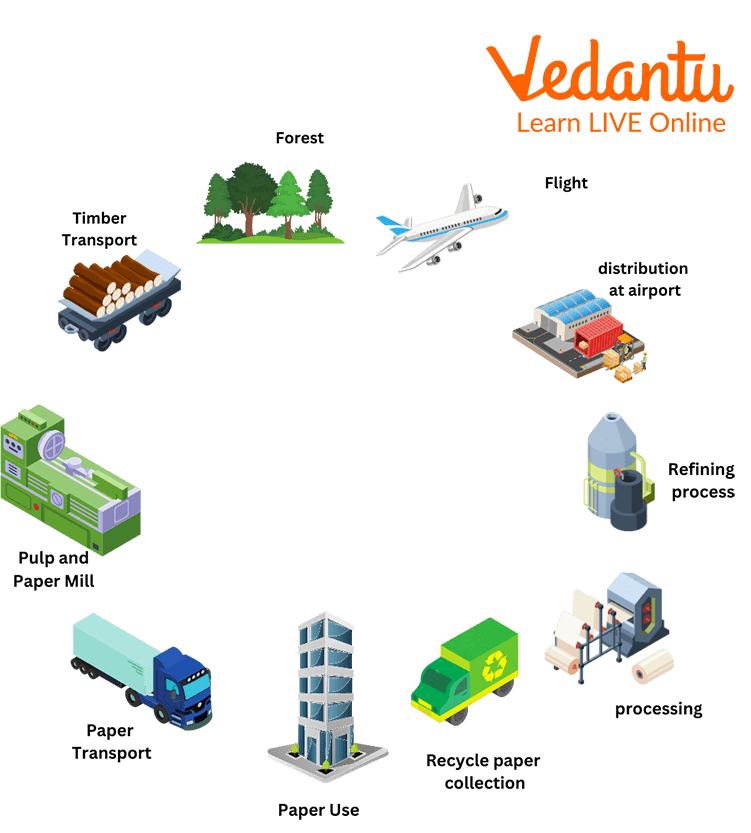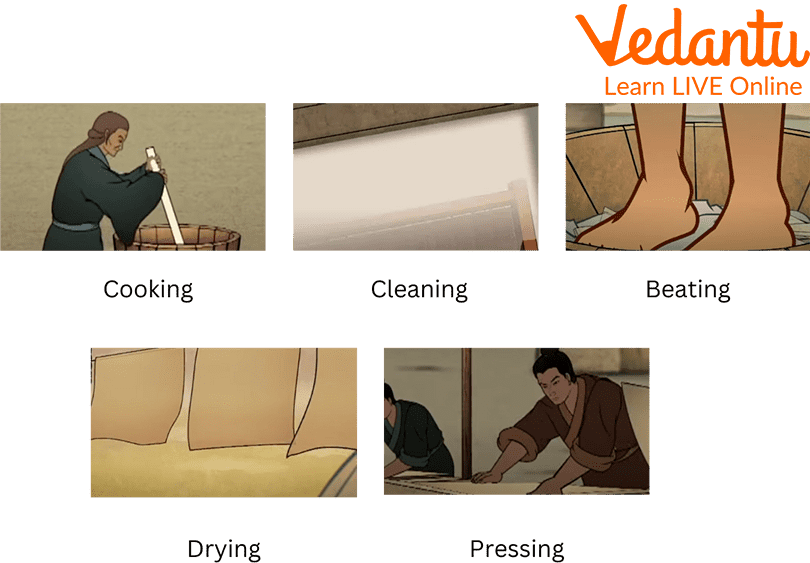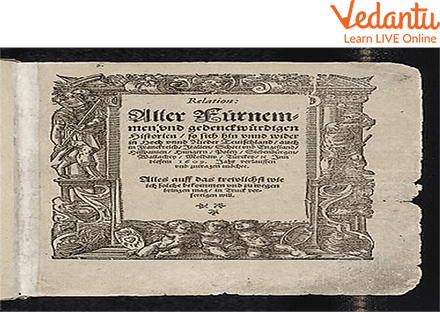




Introduction to Paper
Paper is a thin nonwoven fabric traditionally made from a mixture of milled plants and fibres. Paper is a thin substance that people use for writing, printing, wrapping, and numerous other purposes. People generally make paper out of natural fibres, or lengthy, thin strands of plant material. Today maximum paper comprises wood fibres, called wood pulp.
Nowadays paper is used in many hands-on activities in schools, kids use paper to make things with paper for kids in various activities. You know some uses of paper as you use it in the study but have you ever wondered how paper is made? Let's now study more about the paper in this article.
How is Paper Made?
Paper is made in two steps:
Cellulose fibres are removed from a variety of sources and renovated to a pulp.
Pulp is blended with water and placed on a paper-making machine where it is smoothed, dried, and cut into papers and rolls. You will understand this process through the cycle of paper making process given below. This process starts in the forest and ends at transportation from the flight.

A Paper-Making Process
Forestry Products
Most paper is formulated from forestry products, usually trees. The largely common trees that paper comes from are:
Spruce
Pine
For
Larch
Hemlock
Eucalyptus
Aspen
Birch
In most cases, the best portions of these trees are used for construction, and less preferable fractions are used in pulp.
Cotton and Other Natural Fibres
Natural fibres such as cotton are utilised sometimes because their fibres are extremely strong. This makes it an outstanding choice for documents that may require be archived. This strength, integrated with its unique feel is why cotton paper is prominent for letterhead and other corporate stationery products.
Recycled Fibres
Many papers include several types of recycled content. These include:
Pre Consumer Waste (paper garbage from the paper manufacturing and printing processes)
Post-Consumer Garbage (paper waste that has already reached a consumer, like a recycled newspaper)
How is Paper Pulp Made?
Although many fibres were referred to above, forestry products are the basis of most fibre in paper pulp. There are three major components, which must all be segregated to make pulp.
Bark
Fibre
Lignin
The bark conserves the fibres of the log, which are held jointly by lignin. The goal is to remove the fibres, and this is accomplished either using a chemical or mechanical process.
Paper mills all work with a slight difference, so please keep in mind that these are abstractions.
History of Paper
The first paper-like plant-based writing paper was papyrus in Egypt (4th Century BC), but the first true paper, the first valid papermaking process was reported in China during the Eastern Han period (25–220 CE), culturally attributed to the court of the official Cai Lun. This plant-pure coalition produced by pulp mills and paper mills was utilised for writing, drawing, and money.
The process of making paper used in history is given below in the picture. It includes cooking, cleaning, beating, drying, and pressing.

History of the Making of Paper
During the 8th century, Chinese papermaking circulated in the Islamic world, replacing papyrus. By the 11th century, papermaking was sent to Europe, where it replaced animal-skin-based parchment and timber panels.
By the 13th century, paper making was refined with paper mills utilising water wheels in Spain. Later modifications to the papermaking process came in 19th century Europe with the innovation of wood-based papers.
Uses of Paper in Daily Life
There are many several types, or grades, of paper. Daily writing and printer paper, called a bond, is thin and smooth. Few papers, especially paper used for arts & crafts, are thicker and occasionally textured. Cardboard is a rough, thick type of paper utilised to make boxes and other packaging. The paper used for newspapers, called newsprint, is thin and cheap. Converted paper is made from used paper or leftover bits of modern paper.

Use of Paper as the Newspaper
The Paper has many other logical and creative aims. People use paper to make books, cards, gift wraps, cash, egg cartons, and hundreds of other commodities.
Summary
In this article, the whole lifecycle of a paper is discussed. Firstly you read how paper is made, this paper making process starts from forest then timber comes to factories and the process ends with transport. Recycling paper is essential as it balances the ecosystem. The history of paper and daily uses of paper are also discussed here. The importance of paper-making commerce in the newspaper advertisement procedure is evident. It is crucial to understand the process of the paper-manufacturing sub-sector. Further, it calculates the amount of waste published into the environment by the manufacturer.
FAQs on Uses of Paper in Daily Life: Practical Applications
1. Before the invention of paper where the writing was done?
Before the invention of paper, society wrote on clay tablets, papyrus, parchment, and vellum. In historical Mesopotamia, Egypt and Iran, cuneiform characters were positioned on wet clay tablets with a stylus created from a reed.
2. When was the first newspaper printed?
The newspaper is a European creation. The oldest direct handwritten information sheets circulated widely in Venice as early as 1566. These weekly newspapers were full of data on wars and politics in Italy and Europe. The first printed newspapers were published weekly in Germany from 1609.
First Newspaper
3. Why is making too much paper harmful to nature?
The environmental impacts of paper production include deforestation, the practice of enormous amounts of energy and water as well as air pollution and waste problems. Paper accounts for around 26% of total garbage at landfills.
















